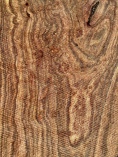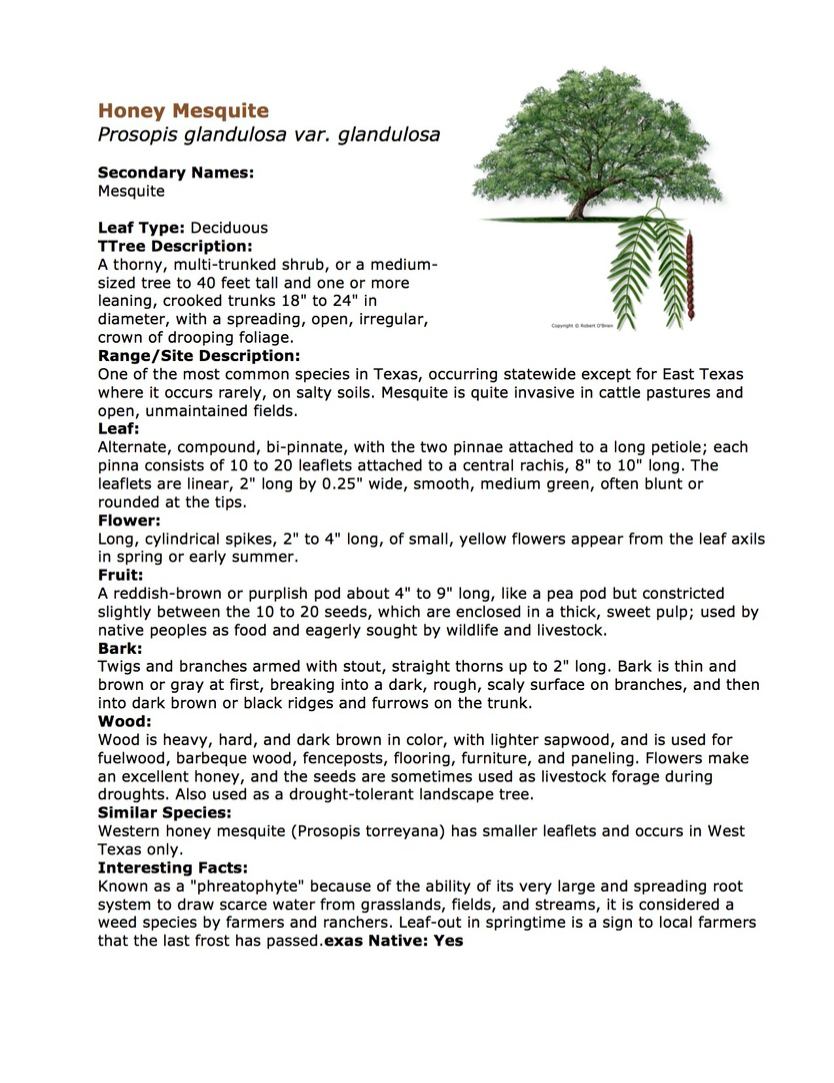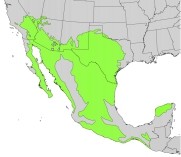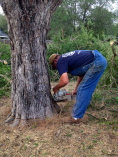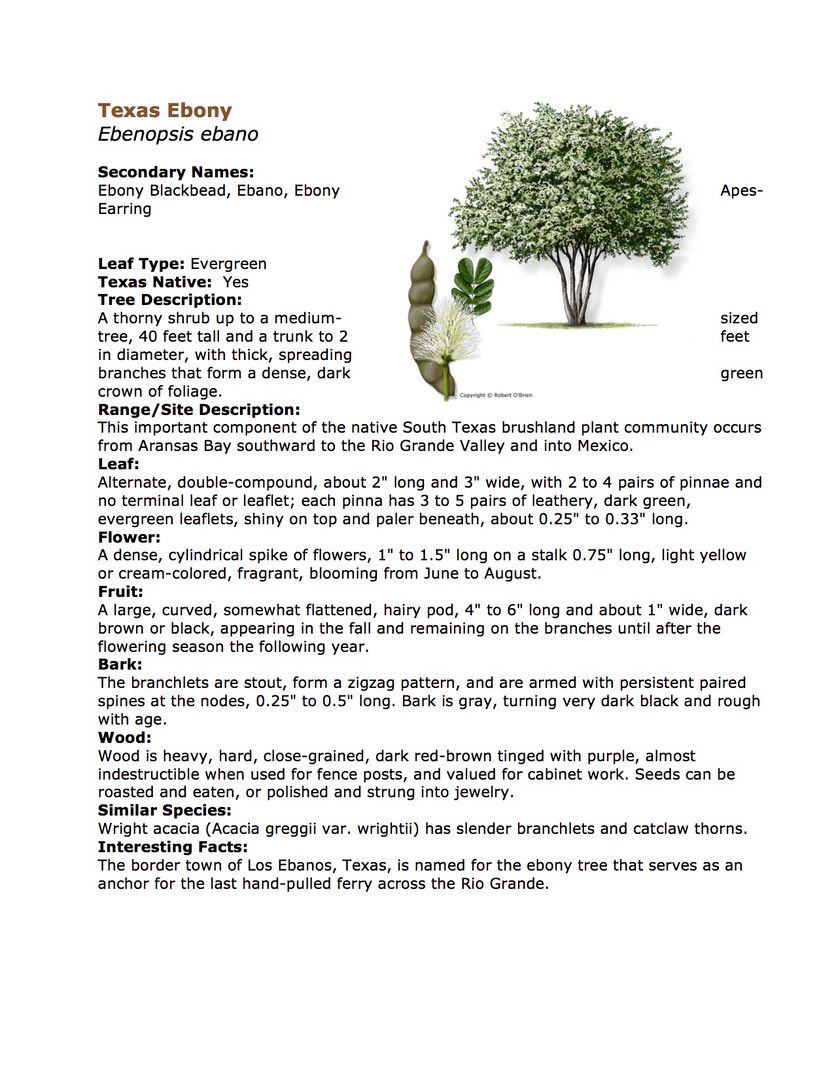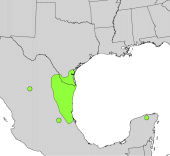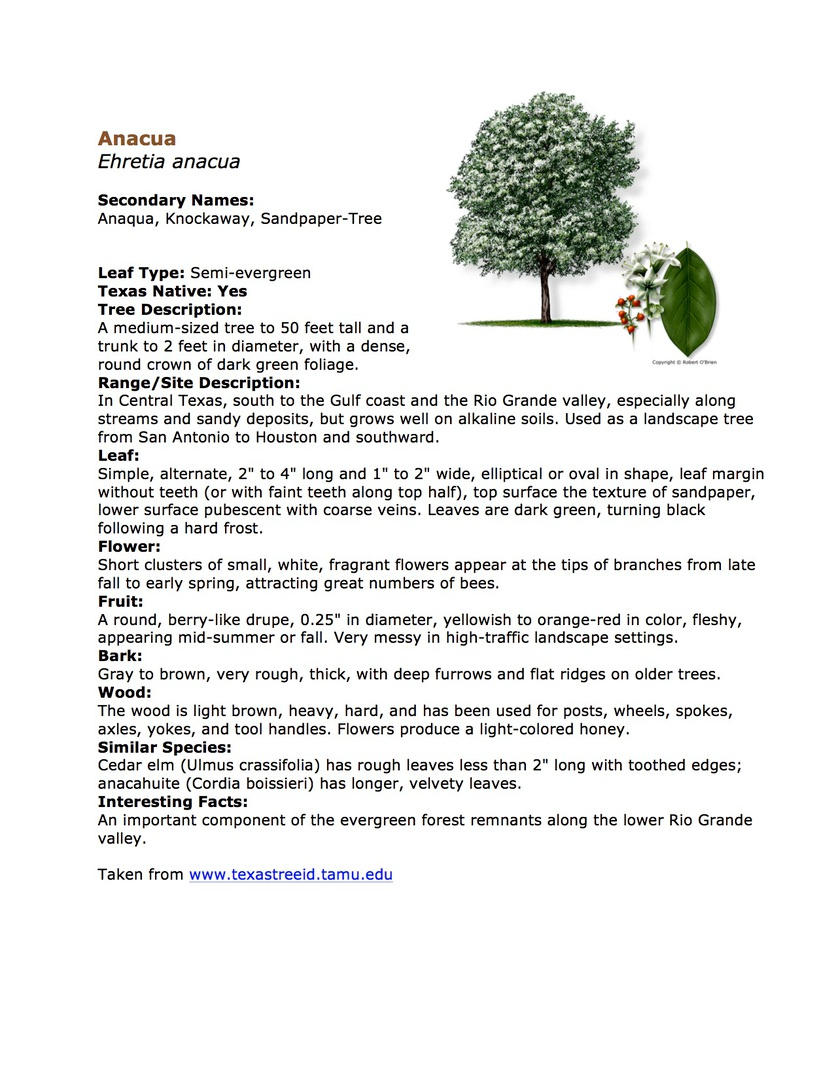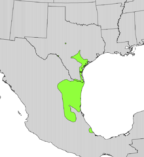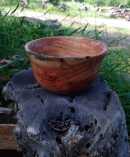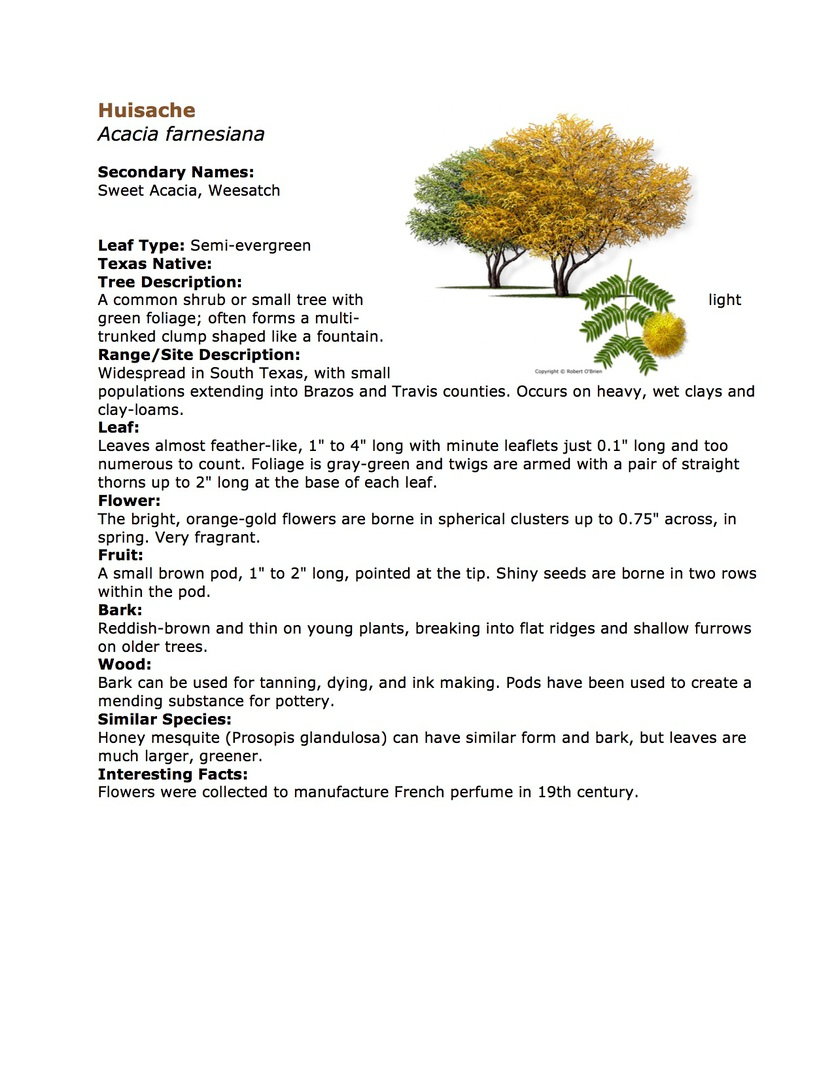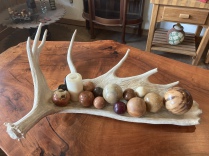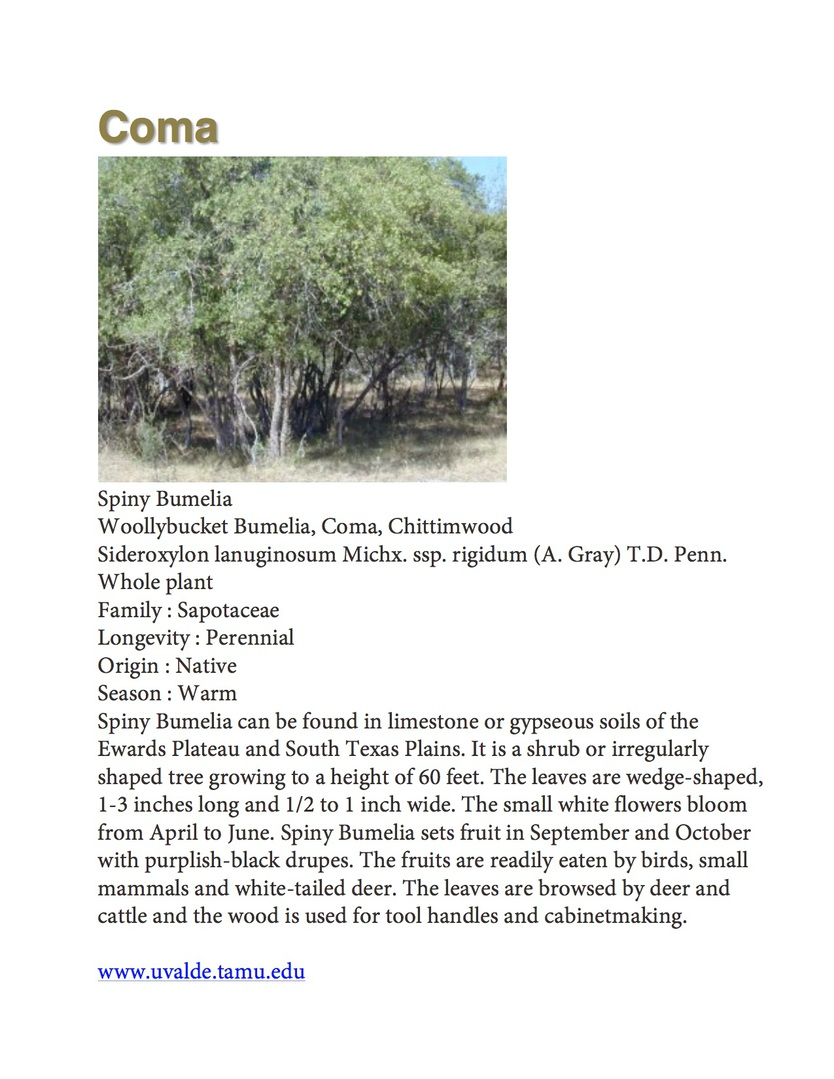Wood Species Information
HONEY MESQUITE
This variety of mesquite is the primary species in South Texas and in my opinton is the most beautiful of them all. Within one board, you have the potential of seeing every grain patter known to trees: curl, ribbon, birds eye burl, wavy, straight, flecks, bark inclusions, crotch ... you name it ... Honey Mesquite has it. It also has a lot of natural defects (or character as we like to call it). Every tree has a crack that runs down the center of it. And, because the trees don't grow straight, the crack also is not straight. But, it is literally one of the most stable wood species in the world. Movement is very, very little. Most people know mesquite as a shrub. But, in some areas it can grow quite large. I have some slabs that are 13' long and 28" wide. It is, by far, my favorite wood to work with.
TEXAS EBONY
The tree pictured is an exception to the rule. It is the largest, clearest, darkest Texas Ebony tree I have ever harvested. We live on the northern edge of its natural range. We have a hard freeze once every 30-40 years. There was one in the 1950's, one in the 80's and another in Feb. 2021. These all resulted in major damage to the heart of the tree. As a result, then center of every one in this area is rotten. But, it is still beautiful near the edges. When sawing one, I always look for guitar bodies and guitar necks. Seldom, do I find any wood big enough for this, but I do try. Small bowls, spindles and accent pieces are 99% of the tree. It is a very hard and brittle wood and is best used as accent pieces and turning blanks.
HUISACHE
This tree does not usually grow a very large trunk and is similar in looks to mesquite. If you do find a large trunk, chances are that it is rotten in the middle. The leaves are smaller and the wood has a pink tinge to it rather than the honey red of mesquite. It's not quite as stable as mesquite and will warp and crack as it is drying. But, it has very similar grain patters to mesquite. And, it works well for turning.
COMA
Somewhere in the antler to the left is a sphere turned from Coma. I will have to search for a photo of coma by itself. However, this is an extremely hard, heavy dense shrub. The largest piece I have ever seen in my life was about 10" diameter and 18" tall before it's first fork. It is usually rotten in the middle. In fact, I'm not quite sure why I even look for it. It hardly seems worthwhile. However, if you like turning extremely hard woods that you can get a burnished finish and not have to sand at all, you will find this a sweet wood to turn. It has a dark orange color with contrasting blond sap wood.

